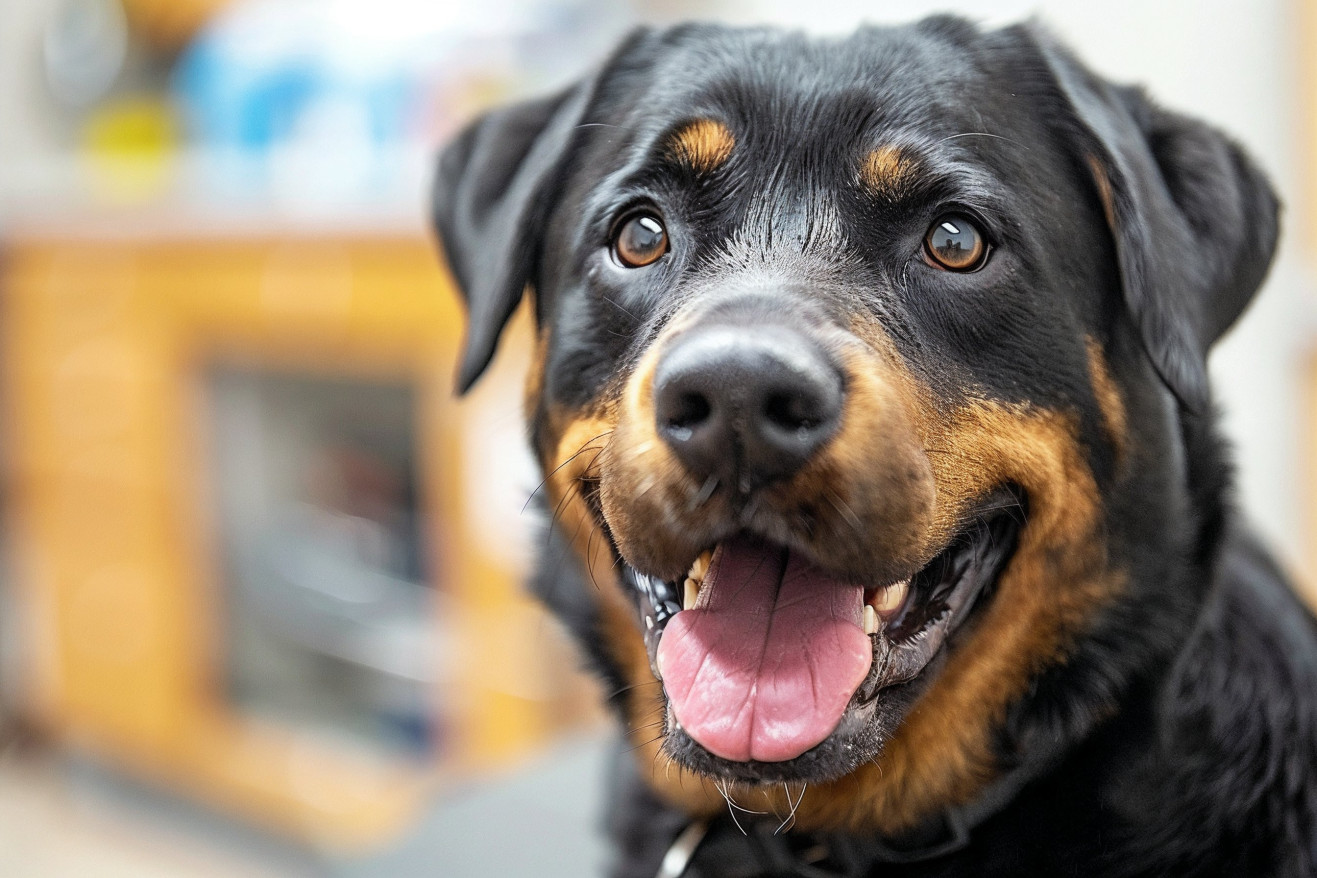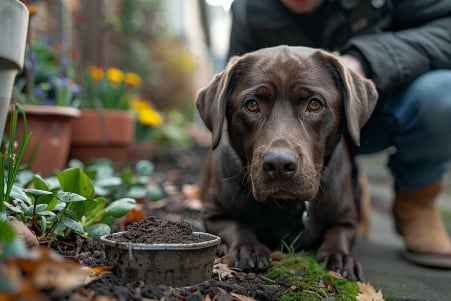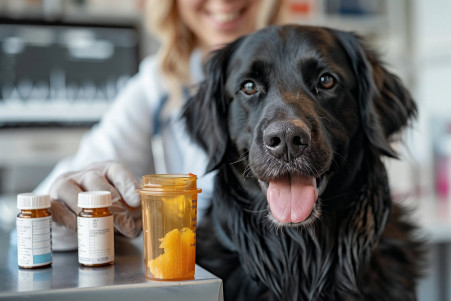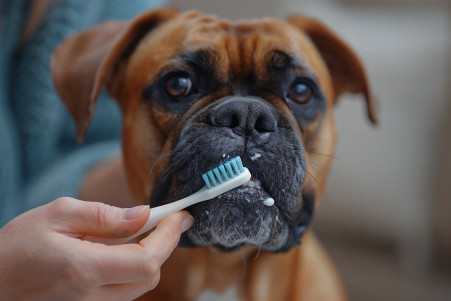Why Are My Dog's Gums Black? All the Causes and Worries Explained
19 March 2024 • Updated 19 March 2024

If you’ve ever looked at your dog’s mouth and wondered why their gums are black, you’re not alone. There are a number of reasons why your pet’s gums may be black, and the causes can range from genetic to health-related to completely normal pigmentation.
Black gums in dogs are often the result of hyperpigmentation, and while it’s usually nothing to worry about, in some cases it can be a sign of an underlying health issue like gum disease, oral cancer, or a deficiency. In addition, certain breeds, such as Chow Chows and Shar-Peis, are more likely to have black gums due to their genetics.
To help you better understand why this happens and to help you determine if there’s anything to be concerned about, we’ve done a deep dive into the veterinary literature to find out all the different reasons why dogs have black gums.
This scientific investigation will look at genetic factors, dental health concerns, and medical issues that can lead to black gums. By the end, you’ll have a thorough understanding of when black gums are nothing to worry about and when they may be a sign of a problem, so you can make sure your dog is as healthy as possible.
Why are my dog's gums black?
Oral Melanoma: The Most Severe Cause of Black Gums
Oral melanoma is an aggressive cancer that makes up 30-40% of all oral tumors in dogs. It is the result of melanocytes, the cells that produce pigment, multiplying out of control, and it is often characterized by the presence of small black or pigmented lesions in the mouth. However, some oral melanomas are amelanotic, meaning they don’t produce pigment.
Oral melanoma is especially worrisome because of its highly aggressive and fast-growing nature. Tumors can grow deep into the bone and surrounding tissue, and they can metastasize to other parts of the body, including the lymph nodes and lungs, in up to 80% of cases.
Symptoms of oral melanoma include halitosis (bad breath), drooling, masses or swelling in the mouth, pain when the mouth is touched, difficulty eating, blood-tinged saliva, and weight loss. Any changes in the color or appearance of the gums that develop suddenly should be checked out by a vet to ensure an accurate diagnosis.
Because oral melanoma can be difficult to treat once it has metastasized, early detection is key. It is usually diagnosed with a biopsy of the tumor tissue, and imaging tests like X-rays or CT scans are used to look for signs of metastasis. Lymph node aspiration may also be used to determine if the cancer has spread to the lymph nodes.
What Else Can Cause Black Gums in Dogs?
In addition to oral melanoma, there are several other medical issues that can cause black or discolored gums in dogs. PetMD explains that gum disease, gingivitis, and certain skin diseases can all cause changes in gum color.
Gum discoloration can also be a sign of an underlying systemic issue, such as a nutritional deficiency or autoimmune disease. The Dog Blog by Pooch & Mutt explains that pale or white gums can be a sign of anemia, blood loss, or other serious health issues.
Trauma or injury to the mouth can cause localized gum discoloration or bruising. PetCube's article explains that any sudden changes in gum color or appearance should be checked out by a veterinarian to determine the cause.
It's important to see a vet, as they can diagnose the cause of the gum discoloration and suggest the best course of action. This will allow dog owners to address the problem and ensure their dog's oral health is in good standing.
Healthy Gum Color and Oral Hygiene
Keeping your dog's gums a healthy color and maintaining good oral hygiene are important for your dog's overall health. The Farmer's Dog explains that a dog's gums should be a healthy pink color, and they should be moist and somewhat shiny, which are signs of good hydration. Regular dental care and good oral hygiene can help make sure your dog's gums stay this way.
One of the best ways to prevent the plaque and tartar that can lead to gum disease is to brush your dog's teeth every day. PetWellClinic recommends using a soft-bristled dog toothbrush and toothpaste that's safe to swallow. If your dog doesn't like to have his teeth brushed, dental chews, toys, and water additives can also help remove plaque.
A healthy, balanced diet is also important for maintaining good dental health. Dogs Naturally Magazine explains that a natural diet that includes raw meaty bones, muscle meat, and recreational chews can help maintain a healthy oral microbiome and prevent tartar. In addition, probiotics can be added to your dog's diet to help increase the number of good bacteria in his mouth.
Regular vet visits and professional cleanings are important to catch and treat any dental problems early and to maintain good gum health. By following these preventive tips, dog owners can help make sure their dogs' gums stay healthy and free of disease.
How to Tell If Your Dog's Gums Are Unhealthy and When to See a Vet
It's important to check your dog's gums regularly to make sure they're healthy. The Spruce Pets notes that healthy gums are a bright bubble gum pink color and feel moist and slick to the touch. When you press on the gums, the color should blanch and then return to the normal pink color within one to two seconds - this is called the capillary refill time (CRT).
Vets-Now explains how to check your dog's gums properly - lift the upper lip to check the color just above the canine teeth. They also suggest checking the color of the inner eyelid tissue if your dog has naturally dark or pigmented gums. It's important to know what's normal for your dog's gum color and texture so you can recognize changes that could be a sign of a problem.
Whole Dog Journal offers a helpful chart that shows different gum colors and what they may mean. For example, pale or white gums can indicate anemia or blood loss, while blue or purple gums can indicate a lack of oxygen. Bright red gums can indicate overheating, poisoning, or inflammation. If you notice any changes in your dog's gum color, texture, or CRT, you should take them to the vet for an evaluation.
It's important to be observant and trust your gut. PetMD explains that even seemingly small changes, like bad breath or minor bleeding, should be checked out to make sure your dog doesn't have dental disease or another health condition. By getting to know what's normal for your dog's gums and getting them checked out if you notice any changes, you can help make sure they stay healthy.
Conclusion: How to Support Your Dog's Gum Health
The most important things to remember from this article are the many reasons why a dog might have black gums, from genetic factors to serious health issues like oral melanoma. Regular dental care, including daily brushing, dental chews, and professional cleanings, is the best way to keep your dog's gums healthy and prevent gum disease.
Pet parents can also help by keeping an eye on their dog's oral health and watching for any sudden or concerning changes in their gum color or appearance. Seeking veterinary care as soon as possible can help ensure that the cause of any issues is identified and treated, which will help protect your dog's overall health.
By prioritizing gum health and making preventive dental care a priority, pet parents can help their dogs maintain healthy, pink gums throughout their lives.
Whether you're due for a dental check-up or you're interested in learning more about the options available to help support your dog's oral health and keep their gums pink and healthy.


